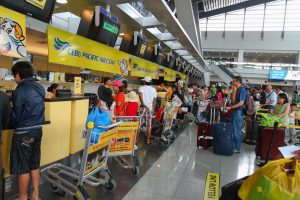Ninoy Aquino International Airport (NAIA) in Manila is the largest airport in the Philippines and the primary international gateway into the country. It is a busy airport, with nearly 31 million passengers transiting in 2022 and over 45 million in 2023. Built to handle roughly 32 million passengers a year, NAIA is already over-capacity even as demand for air travel is expected to keep rising in the years ahead.
NAIA, which since 1982 has been run by a government corporation called the Manila International Airport Authority, is also frequently ranked as one of the worst airports in the region, plagued by flight delays and other operational issues. Last year, for instance, several personnel were caught extorting money from a tourist who was passing through the airport.
The government is aware of these issues and has decided that the best way to fix them is by turning to the private sector. NAIA has been the target of privatization efforts in the past, but it was the Marcos administration that finally got the process rolling in earnest last year, with several companies bidding on a 15-year concession to operate the airport.
The concession was awarded to San Miguel Corp (SMC), a massive conglomerate that straddles much of the Philippine economy. San Miguel is well-known for its global beer brand, but it has interests in a wide variety of sectors including real estate, energy, oil, and transportation infrastructure.
In addition to operating a number of expressways and public transit systems in the Philippines, SMC is currently developing the New Manila International Airport which is located about 35 kilometers north of Manila and is slated to be operational in 2027 or thereabouts. Now, in addition to developing Manila’s new international airport, SMC has the right to operate the old international airport for a period of 15 years, with a possible 10-year extension.
The deal, on its face, appears to be extremely favorable for the government. According to the terms of the concession, SMC (which is partnering with South Korea’s Incheon airport) will invest heavily in rehabilitating NAIA. According to media reports, the deal requires SMC to invest 88 billion Philippine pesos (around $1.5 billion) in upgrades within the first six years, and to increase the airport’s passenger capacity to 62 million.
The financial side of the deal is also very generous to the government, with the concession structured in such a way that about 60 percent of annual revenue will go directly to the state. The other bidders, including existing operator Manila International Airport Authority, were way below that, offering revenue splits somewhere in the 25 to 35 percent range. In addition, SMC must pay an upfront fee of 30 billion pesos, which is about $500 million.
The interesting thing is that despite suffering from chronic under-investment and poor management, Ninoy Aquino International Airport has historically been a profitable asset for the national government. Under its old arrangement with the Manila International Airport Authority, the government took 20 percent of the airport’s gross revenue and at least 50 percent of its annual net income as a dividend.
Including taxes and other fees passed through to passengers, NAIA generated an estimated 6.75 billion pesos ($115 million) for the state in 2023. Obviously, the government thinks under private management earnings will be higher, and now it will also be off the hook for the costly capital expenditures needed to modernize the airport.
One might wonder how exactly SMC plans to invest billions of dollars in upgrading an aging airport, while also offering the government a very generous revenue split, and still earn a profit. That is a good question and the plan, whatever it is, will very likely involve higher prices, with the Department of Transportation already announcing several fee increases would start kicking in later this year. Existing tenants and businesses in the airport are also expecting cost increases as the new management takes over.
The Philippines, more so than many of its neighbors, often shows a willingness to turn key infrastructure such as electricity, municipal water, and now its biggest international airport, over to private market actors. This frequently results in higher prices for consumers which is, of course, part of the trade-off when you use the private sector to provide and manage critical infrastructure. Given NAIA’s well-chronicled operational issues and the government’s unwillingness or inability to invest the necessary funds to bring it up to date, in this case, it might be a trade-off worth making.

































